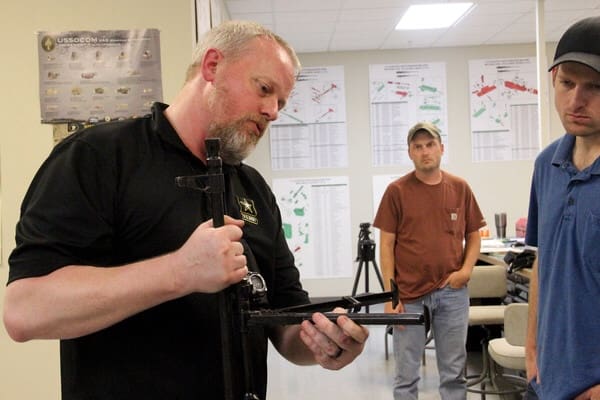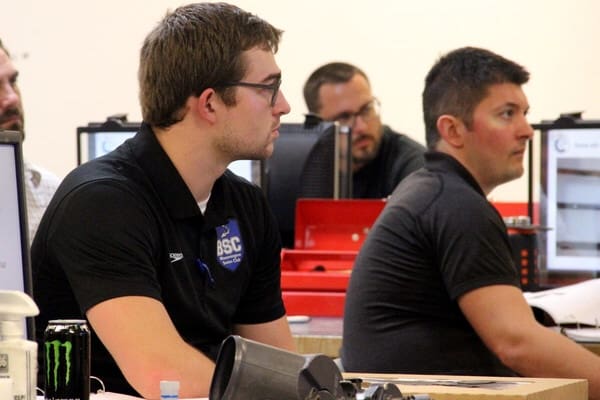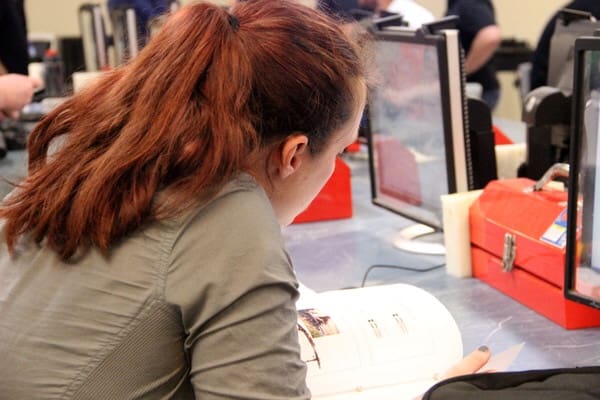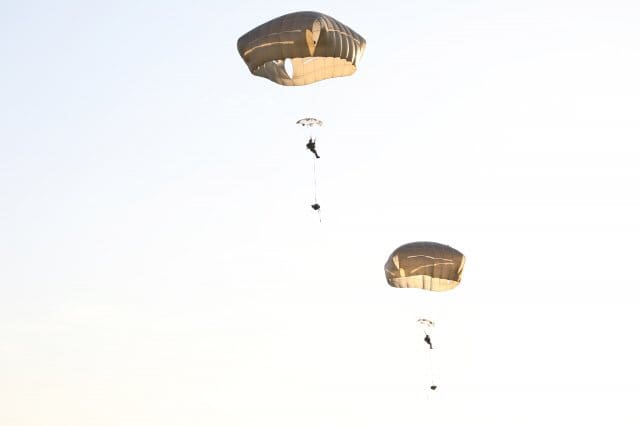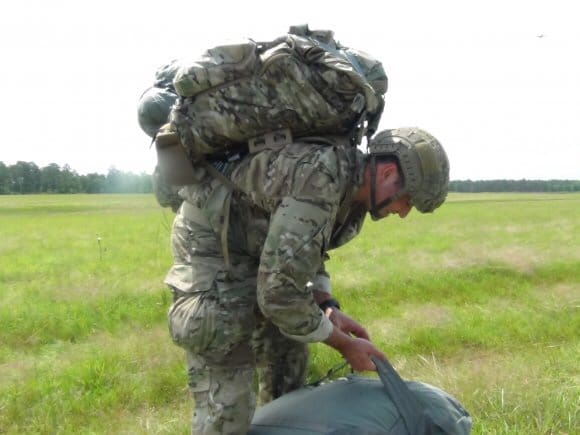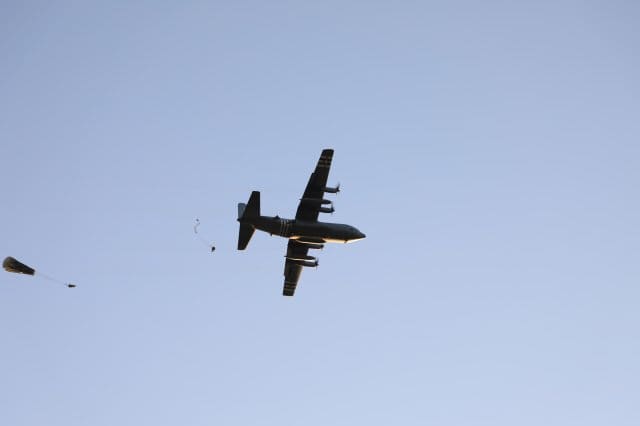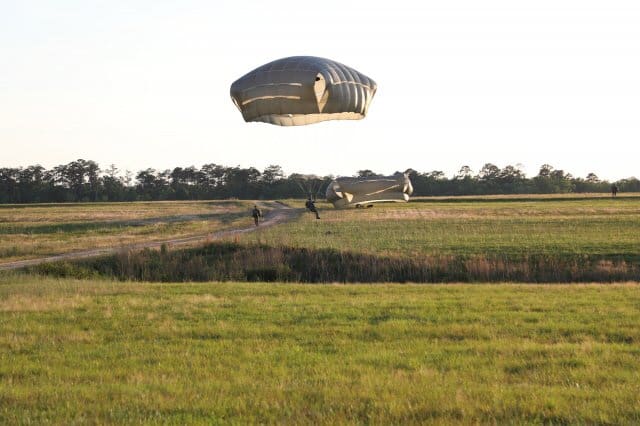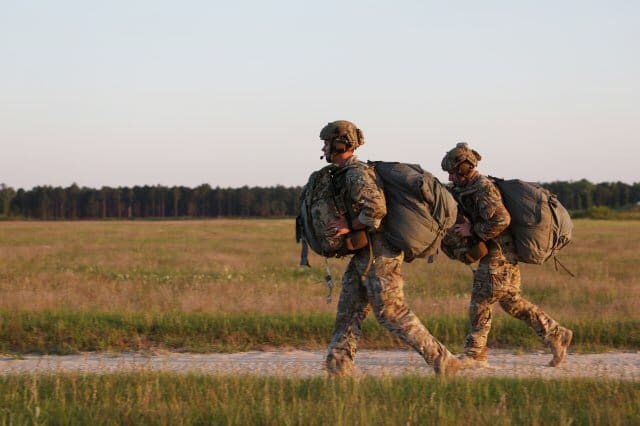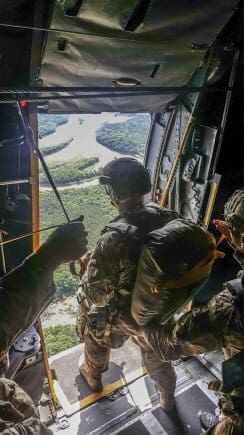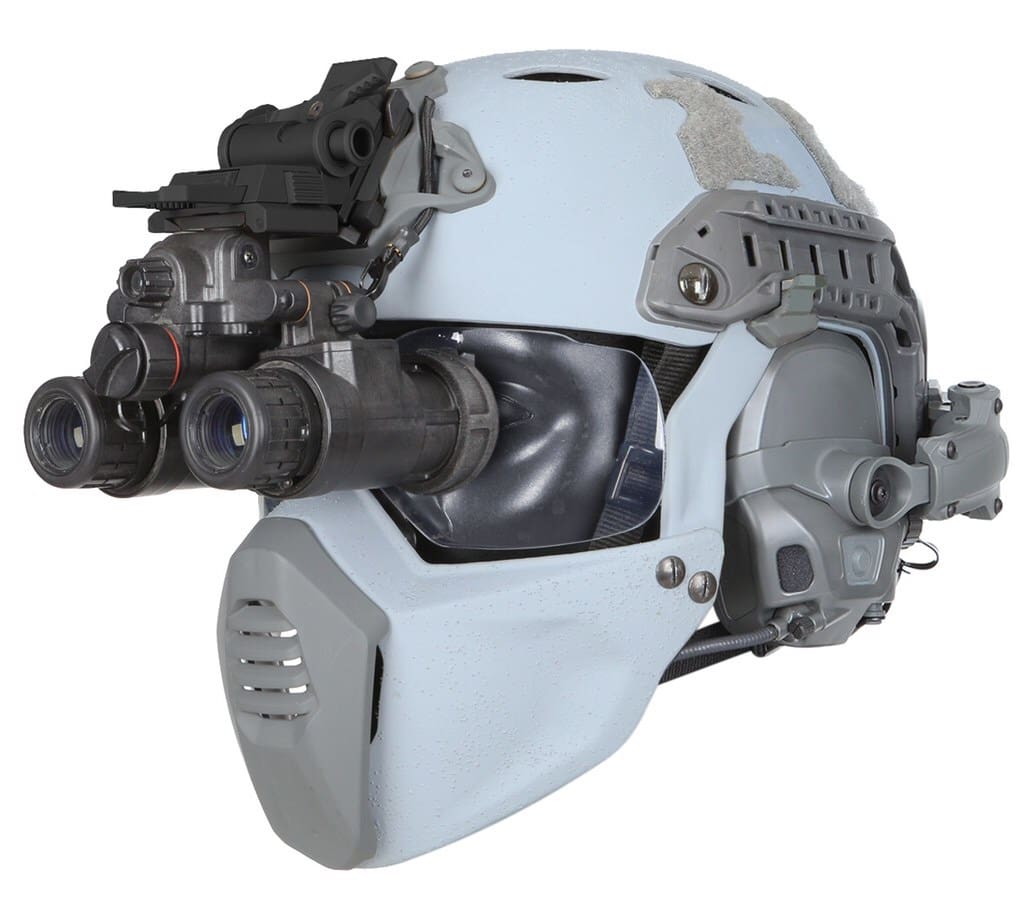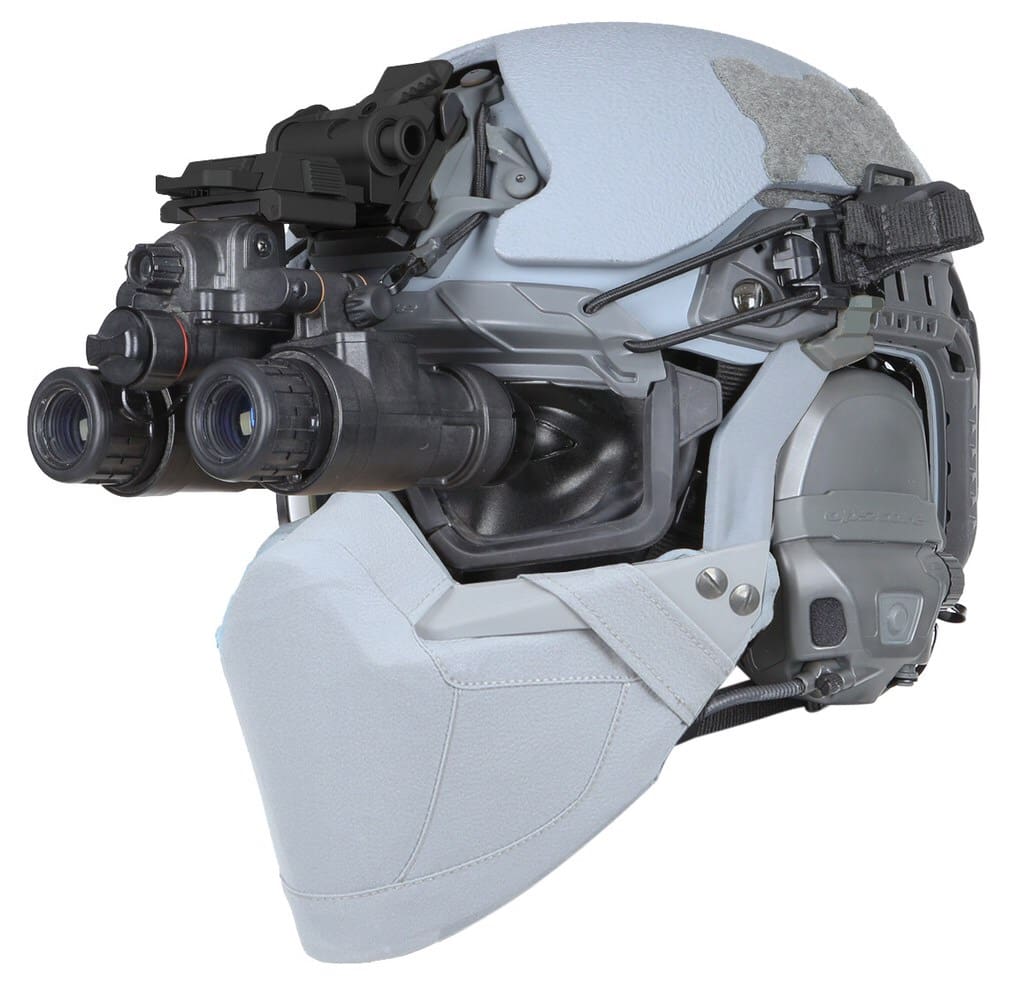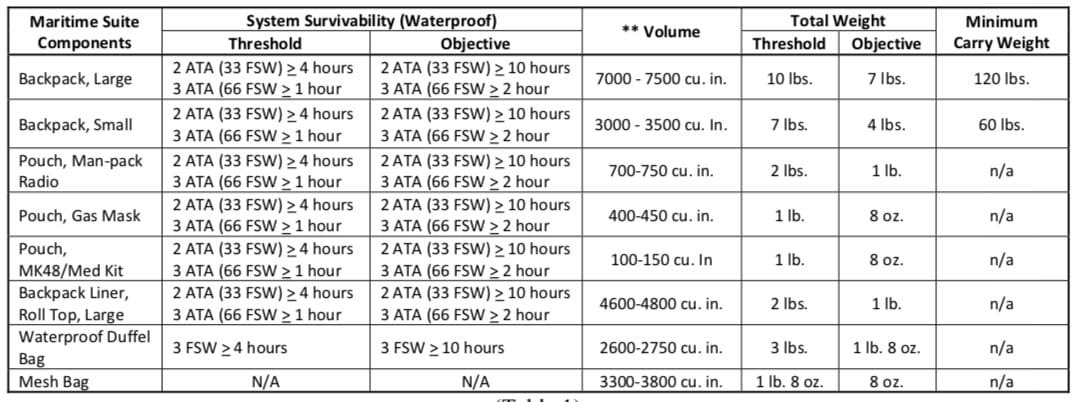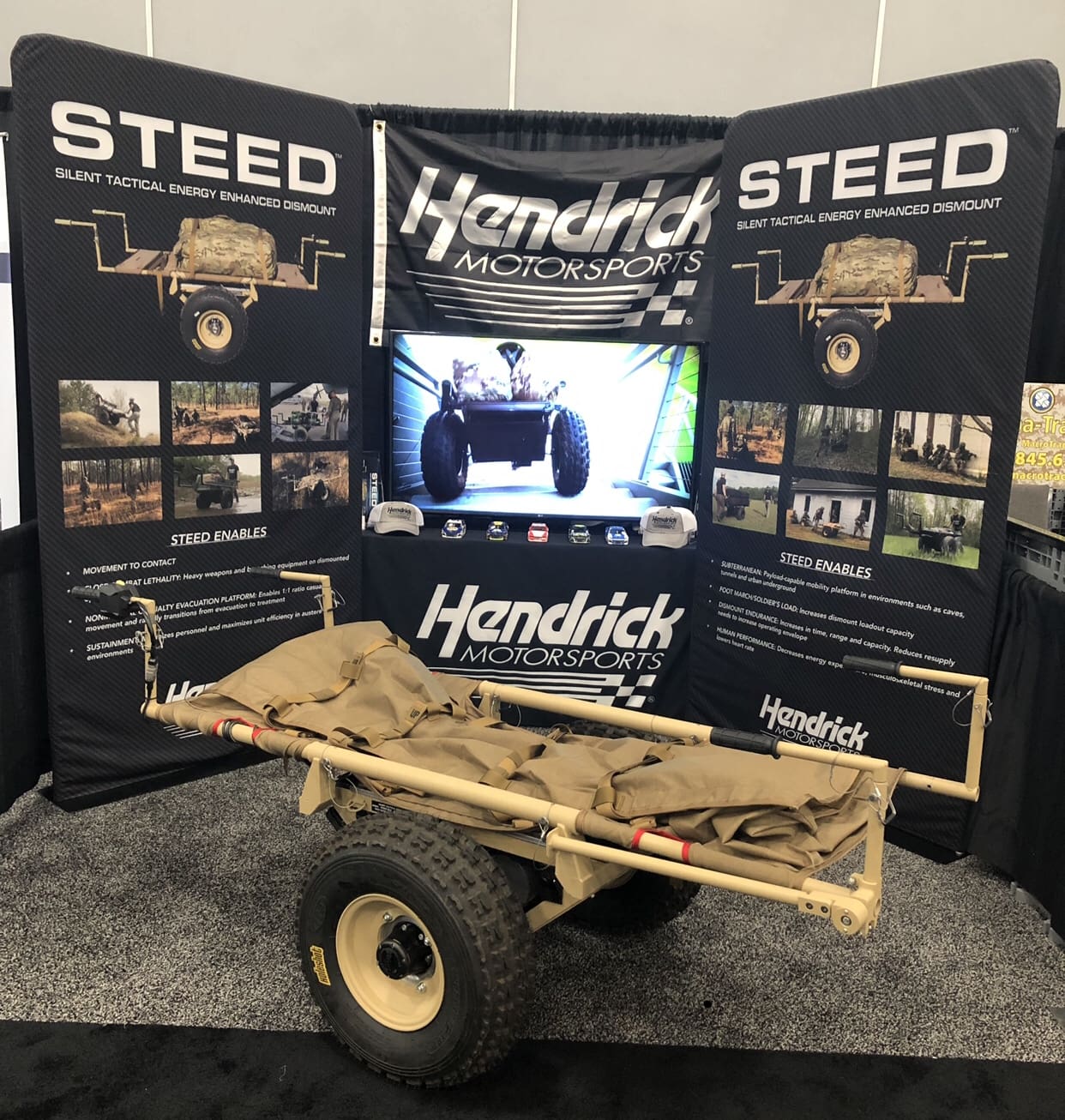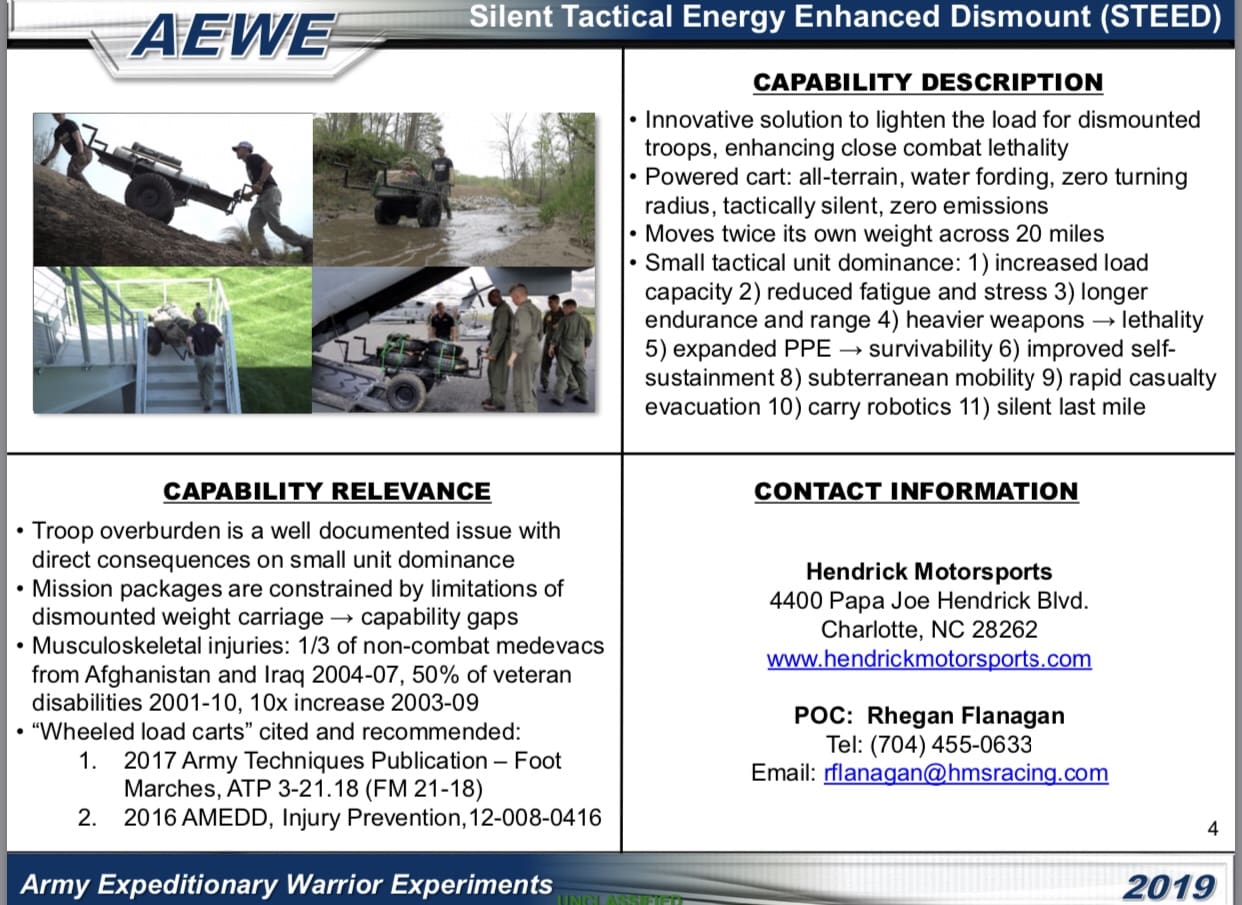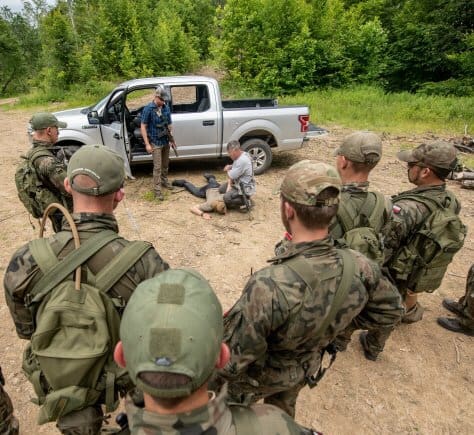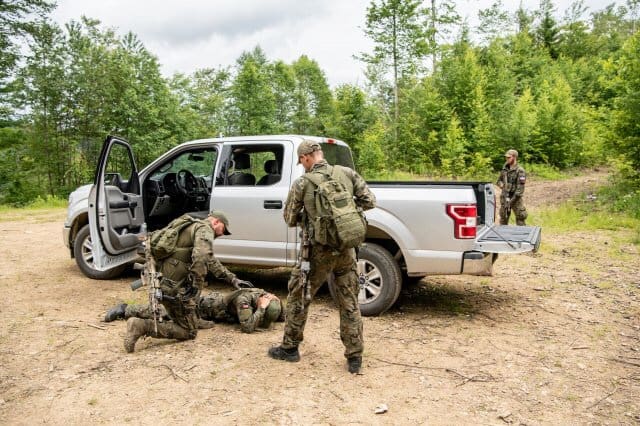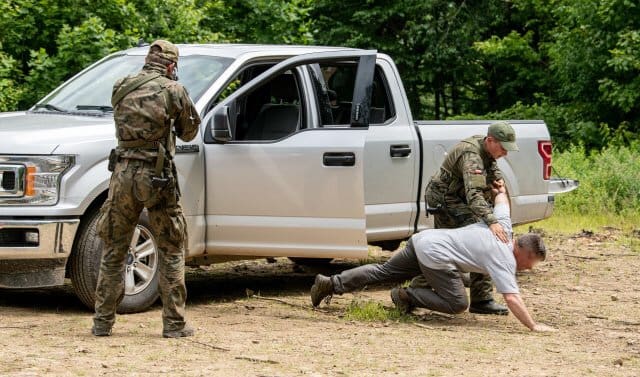The Program Executive Office Special Operations Forces Warrior (PEO-SW) and Joint Special Operations Command (JSOC) will conduct a combined 2019 SWORDS/JCTE (previously SOFWIC) event on November 6, 2019.
The purpose of this event is to provide industry with an opportunity for a focused engagement with members of PEO-SW and JSOC to share ideas that facilitate the delivery of innovative capabilities to Special Operations Forces (SOF).
The SWORDS/JCTE General Session will be open to all interested vendors. The General Session will consist of introductory presentations by Special Operations Forces Acquisition, Technology & Logistics (SOF AT&L) leadership, an overview of PEO-SW warfighting commodity areas, an overview of JSOC Capability and Technology Interest items and forecasted contracting opportunities for FY20 and beyond. Immediately following the general session, the remainder of the day will consist of 60-minute invitation-only sessions of selected vendors to discuss their White Paper and/or Cooperative Research and Development Agreement (CRADA) Proposal submissions to USSOCOM personnel. No other vendors will be allowed in these sessions besides the presenting vendor. However, the PEO and Deputy PEO, program manager, and representatives from the Director, Science and Technology (S&T) office, Small Business Innovation Research (SBIR) office, Technology Industrial Liaison Office (TILO), SOFWERX and the Joint Acquisition Task Force (JATF) will be available throughout the day to discuss collaboration opportunities.
In particular, USSOCOM is interested in the following capabilities:
1) Ground Mobility:
a. Suspension/ Seat shock absorption technology for Ground Mobility Vehicle 1.1/Non-Standard Commercial Vehicle (GMV 1.1/NSCV)
i. Vehicle – Suspension system related upgrades/replacement to increase performance, durability and reliability.
ii. Occupant – Vehicle occupant technology that improves the isolation between the input from the terrain and the corresponding input to an occupant thus reducing Operator fatigue.
b. Means of reducing driver cognitive workload in lone driving or convoy situations by adding autonomy or other driver aids.
c. Payload Enhancement (GMV 1.1) – solutions that enable the vehicle to carry more payload without significantly degrading performance.
d. Battery Technology (NSCV, GMV 1.1) – Mature 12 Volt (or higher) battery technology for cold temperature start and/or reduced size without degrading Cold Cranking Amperage or AMP hours. Mature battery technologies that can withstand cold start scenarios down to -50 degrees Fahrenheit and also extend the timeline for silent watch. Reducing size, but not performance, is ideal as well. Certified for flight is required.
e. Light Vehicle Safety Improvements and Accessories for Light All-Terrain-Vehicle (LTATV) – Improvements to general safety items to include (but not limited to): seating, roll cages, stability control, driver assist functions, etc.
f. Visual Augmentation Integration to enhance Mobility (all platforms) – Solutions to allow for enhanced terrain navigation, better awareness of vehicle surroundings in day, night or adverse weather conditions. Mobility is also enhanced by technology allowing the vehicle driver to keep his eyes and focus on the road more often during operations while still having all the key vehicle operational data available to the driver (e.g. HUD, lane monitoring). Information provided to the driver, perhaps in an augmented reality manner, which helps the driver identify if the route taken is suitable or capable of navigation based on the vehicle.
2) PM – Lethality: Special Operations Forces require a comprehensive, systems-of-systems, innovative strategy to fulfill small unit lethality objectives against pacing threats. Evolving from SECDEF, Joint Staff, USSOCOM and COCOM guidance the PM for SOF Lethality will implement rapid acquisition authorities to evaluate capabilities that fulfill the Nation’s strategic objectives. The systems of systems development strategy will be outlined as the Lethal Integrated Operator-Network (LIO-N) (see Figure 1, found on Attachment #01). The LIO-N integrates tactical “at-the-edge” lethality with emerging networked information and autonomous systems to enable precision engagement from close quarters to over-the-horizon distances with organic and non-organic target engagement methods.
a. Visual Augmentation Systems (VAS): Sensor technologies being developed include image intensification thermal imaging, short wave infrared, multi-spectral, fusion, and other sensor types. Developments will decrease weight, increase range, increase situational awareness, provide data, image processing, image, filtering, determine wind speed, observe bullet trace, and sensor fusion to be able to detect, identify, classify and engage targets at greater ranges. Intra-Soldier Wireless (ISW) integration – is the emerging standard of wireless interoperability amongst devices worn by a soldier. Any device that connects through wireless to other soldier-worn devices must integrate ISW (See Figure 2, found on Attachment #01).
i. Signature Reduction technologies for Targeting Laser (Out-of-Band and Notional Laser) – Laser designation technologies that are able to be perceived through typical and widely fielded Image Intensification technologies. Notional laser could exist only in virtual reality and be perceived through an integrated augmented reality display inside an eyepiece of Night Vision Goggles (NVG) (ISW integration).
ii. Precision Aiming laser with built in range finding (up to 2000m), ballistics, and environmental sensing capable of blue tooth and Near field communications (ISW integration).
iii. Head-mounted Devices – Looking for weight saving technologies or novel methods to move weight off of the head (ISW integration).
iv. Capabilities Include technologies that utilize Virtual Reality (VR) and / or Augment Reality (AR) information solely, together, or in combination with actual reality (R), to improve SOF operational mission effectiveness. Man portable system, that can process georeferenced imagery on a laptop (or desktop) computer, or other mission suitable, portable computational device, to create a three dimensional (3D) virtual rendering of a potential objective area in an austere environment. The virtual rendering can then be used to conduct a virtual walk through of the objective area for mission planning and rehearsal purposes. This virtual environment is also capable of allowing an Operator to assign and place mission critical points of interest that can be translated into the Operator’s Tactical Assault Kit (TAK), (ISW integration).
v. Hand Held Devices – Seeking size, weight, and power enhancements on handheld VAS commodities (ISW integration).
vi. Weapon Mounted Devices – seeking size, weight, and power enhancements on weapon mounted VAS commodities (ISW integration).
vii. Ballistic reticle design options that accommodate current and future crew served weapons for increased accuracy both day and night (ISW integration).
viii. Precision Variable powered optics capable of acquiring targets at 50-1500m and beyond (ISW integration).
ix. Next Generation Target Location Device – Increased target location accuracy capabilities that reduce target location error (TLE) for next generation hand held observation and targeting systems (ISW integration).
x. Thermal Beacon Technologies (Mid Wave Thermal or other Spectrum solutions) range >1.00µm. The thermal scene of a battlefield environment is often cluttered and dynamic. This presents a difficult scenario for a human observer to pick out a thermal signal from a friendly device (ISW integration).
b. Ammunition and Weapon Systems:
i. Signature reduction for Small Arms – Sound, Flash, Thermal.
ii. Machine Gun Suppressor capable of surviving high volume/rate of fire.
iii. Intermediate Caliber (.338NM) – Long Range Machine Gun 2000m to include new tripod, long range-ruggedized optics, and polymer ammunition.
iv. Suppressor for MK27 Gen 4.
v. Programmable Ammunition: Munitions (all types: small/medium/large caliber, grenades, shoulder launched) with programmable capabilities, including terminal effects (Point Detonating, Delay Detonating, Air Burst, etc.) and/or trajectory (direct fire, top attack, course correction, guidance, etc.
vi. Precision Strike Capabilities capable of providing precision fires on ranged targets (1k-50k). Seeking improved and extended datalink capability that enhances overall range and ATAK control of multiple munitions.
3) Soldier Protection, Survival, and Equipment Systems (SSES):
a. Body Armor – Novel technologies and designs that significantly decrease weight while increasing or maintaining level of protection.
b. Ballistic Helmet – Lightweight ballistic helmet and optional modular mandible that defeats the 7.62x39mm MSC projectile at muzzle velocity; Pad/liner technology to meet or exceed a 14 ft/s impact with less than 150G acceleration, while maintaining comfort and stability of the helmet.
c. Special Operations Eye Protection – High visible light transmission laser protection (visible and IR); ability for a single lens to adapt to various lighting conditions near instantaneously. Technology to mitigate fogging of lenses.
d. Extremity Protection for Extreme High Altitude – Airborne operations are conducted at extreme high altitudes with air temps below -40 C. These temps can lead to vasoconstriction in the extremities. Seeking active heating capabilities to reduce likelihood of vasoconstriction and maintain dexterity during these airborne operations and throughout all phases of the mission.
e. Logistics – Federal Acquisition Regulation (FAR) compliant internet accessible web application (certified mixed/feeder system) for the Special Operations Forces Personal Equipment Advanced Requirements (SPEAR) program capable of property accountability, warehouse management, logistics/supply functions, financial, and personnel management data to include the conversion of measurements to sizes using an approved algorithm for Special Operations Forces-Peculiar (SO-P) individual equipment. Integration with the United States Special Operations Command (USSOCOM) logistics enterprise is mandatory.
4) Tactical Combat Casualty Care Medical Systems (TCCC):
a. Novel FDA approved technologies that apply to individual casualty care and casualty evacuation.
b. Active Cooling and Heating Whole Blood Storage Container – As SOF medics transition from crystalloid and colloid to whole blood for traumatic hemorrhagic resuscitation they are facing major logistical challenges due to the limited temperature range for storing and transporting whole blood far forward on the battlefield. Seeking portable active cooling and heating storage container capable of holding 1-2 units of blood within the FDA regulation temperature range for four (4) to five (5) days. The light weight container should be small enough to fit inside of, or attached to, the current USOCOM Medic Aid Bag and be powered by standard commercial batteries commonly found in a deployed environment.
c. Handheld Battlefield Ultrasound – SOF medics have a requirement for a handheld ultrasound device capable of use in a battlefield environment. Due to the space and weight limitations within the Special Operations medical aid bag, the battlefield ultrasound should be limited to a single universal transducer which can be used for a range applications. The single universal transducer must be durable enough for the battlefield environment and able to function on the Android operating system.
5) Electronic Counter Measures (ECM):
a. Increased battery power density providing the same equipment operating life at a size/weight reduction of up to 50%.
b. High performance multi-band antennas that can be used for electronic countermeasures systems, communications systems, and other functions while reducing SWAP on platforms/operators.
6) Counter – Unmanned Aerial Systems (C-UAS):
a. Passive radar – Radar detection that operates in a passive/promiscuous mode rather than active emitting. Ability for multiple/simultaneous detections.
b. Auto Pilot detection – Detection of non-RF telemetry like Pixhawk, Mavlink, etc., autopilot drone modes. Small, lightweight, low power solutions.
c. Detection – Detecting drones using LTE cellular technology.
d. Kinetic Defeat – Small, lightweight kinetic/hard kill solutions.
SWORDS/JCTE will be held on Wednesday, November 6, 2019 at the Tampa Marriott Westshore, 1001 N Westshore Blvd, Tampa, FL 33607.
Those interested in submitting white papers and/or CRADA proposals should visit www.fbo.gov for full details.
All vendors, whether or not the submit white papers/CRADA proposals must register to attend the general session at swords2019.eventbrite.com. This site will close on October 15, 2019 or when maximum capacity has been reached.
